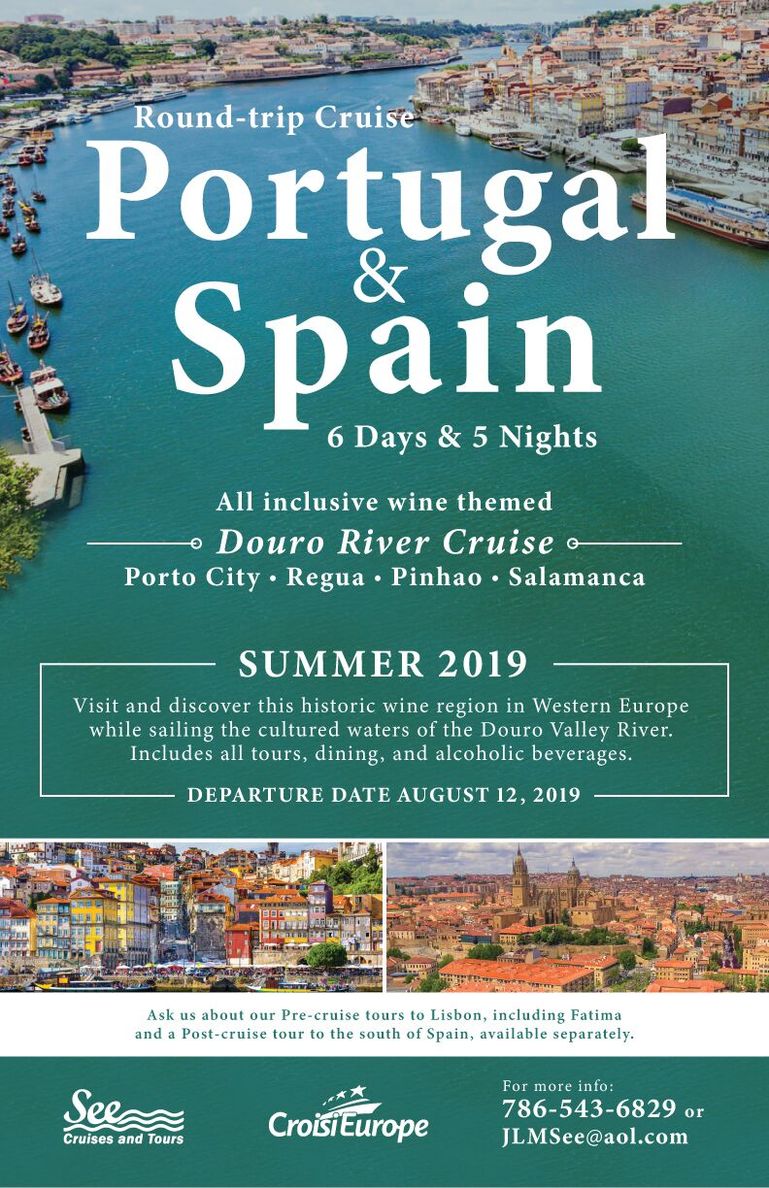Say "bon voyage" to ordinary cruises with one of our extraordinary
European River Cruises!
Itinerary Information
Douro River Cruise ~ August 12-17, 2019
Day 1 - August 12/Monday |
Porto Embarkation: cocktail party, Porto by night tour |
Day 2 - August 13/Tuesday |
Porto Tour Depart from Porto |
Day 3 - August 14/Wednesday |
Vila Real and Mateus Mansion Wine tasting on ship |
Day 4 - August 15/Thursday |
Salamanca (oldest university in Europe) |
Day 5 - August 16/Friday |
Wine vineyard Wine tasting |
Day 6 - August 17/Saturday |
Disembarkation: Optional Excursion and Hotel Night in Lisbon |
Includes:
Saturday Night Disembarkation; Optional Excursion and Hotel Night in Lisbon. Contact Lucy for details.
Sunday - Flight home or optional post-cruise tour
- Excursions
- Nightly entertainment
- Alcoholic Beverages
- Wine lectures
Saturday Night Disembarkation; Optional Excursion and Hotel Night in Lisbon. Contact Lucy for details.
Sunday - Flight home or optional post-cruise tour
Pre-Cruise Tour ~ August 6-12, 2019
Includes:
- 4 nights accommodation in Lisbon with breakfast (Hotel Mundial)
- 1 night accommodation in Porto (Hotel Carris Porto Ribiera)
- 1 fado dinner show
- 1 dinner at Restaurant D'Bacalhau (with drinks)
- Guided tours
- Entrance to Pena Palace
- Airport transfers- airport in Lisbon and departure in Porto
CroisiEurope's Miguel Torga
|
|
~Things to See~
-
Lisbon
-
Sintra
-
Obidos
-
Vila Real
-
Salamanca
<
>
Jeronimos Monastaery
|
Vasco de Gama Bridge
|
Castelo de Sao Jorge
|
Pena Palace
|
Cabo de Roca
|
Torre de Belem
|
Castle of Óbidos
|
Óbidos town
|
Mateus Palace
|
Mateus Gardens
|
Plaza Mayor
|
Old Cathedral of Salamanca
|


